Sometimes writing about vintage shoes reminds me of grade school show and tell – “These are my shoes. And I like them”. But its my blog, a blog about shoes, so why not write another shoe story? Maybe I will write about Trump in my next article. Or not. You’ll just have to wait. I know waiting is hard though. But you’ll make it.
But enough of waiting. In this post I am covering a pair of vintage Florsheim Imperial 93606 shell cordovan plain toe bluchers with an unusual and cool patina. You can’t buy a shoe like this new. But you can buy these shoes when I sell them on eBay. But you’ll have to wait for that. Yes, lots of waiting.
The photo below shows the shoes condition when I started on them. The leather was dry and a bit rough but without any cracks or rips. The shoe shape was good too. From the date code in the shoes, they were manufactured in 1963. Old shoes.
To clean the shoes, I first wiped them down with a damp cloth and cleaned the shoe interior width 70% Isopropyl alcohol. I followed that with two rounds of Lexol NF over the course of 3 days. I have found that the oils in Lexol NF penetrates the shell cordovan better than other conditioners. I would recommend Lexol NF Neatsfoot for older, dry shell. For newer shell, you can stick with Venetian Shoe Cream or Saphir Renovateur. Both are very good products.
When I applied the second round of Lexol NF, I smoothed the leather a bit with a spoon. To do this: insert a shoe tree; apply the Lexol NF to the shoe; and with the backside of a spoon, gently apply some pressure and move the spoon over the leather in a circular manner. The oils get pressed into the leather and the oils provide lubrication for the spoon. I haven’t used a deer bone but I believe this is essentially the same process. But temper your expectations when using the spoon, its not going to fix most scuffs and scrapes.
I let the shoes sit another day and then applied one round of Venetian Shoe Cream. I followed that with a small amount of Allen Edmonds Cordovan Shoe Care Cream and just to the front of the shoes. The Allen Edmonds cream can be a bit sticky if you use too much and it needs to be worked into the leather. So start with a tiny amount. Like miniscule. After a good buffing and a new pair of Cordo-Hyde shoe laces, the shoes were done.
I took the photos a couple days later. The sun really brings out the patina. Click the photos to see enlarged photos.

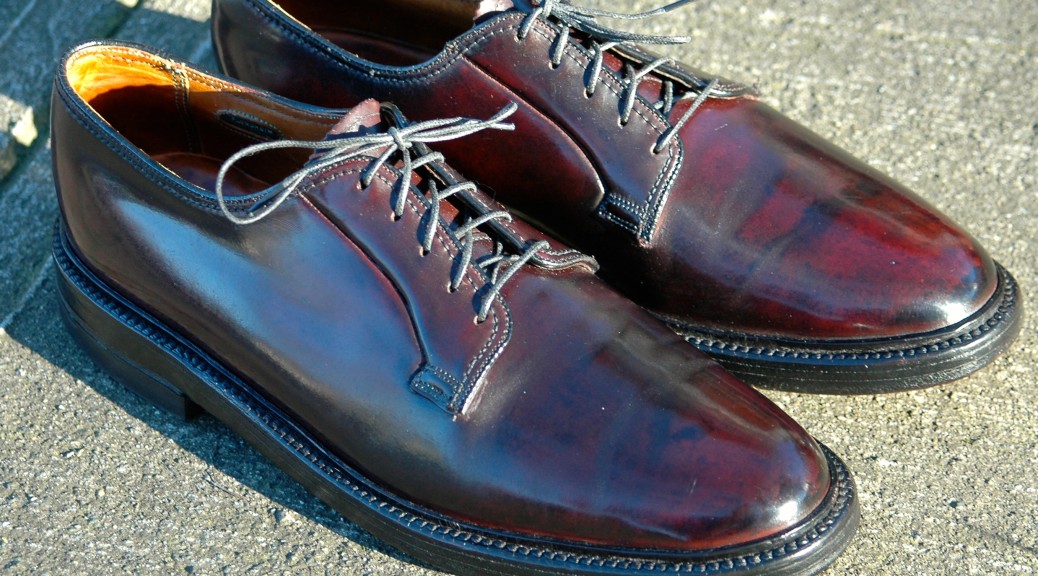
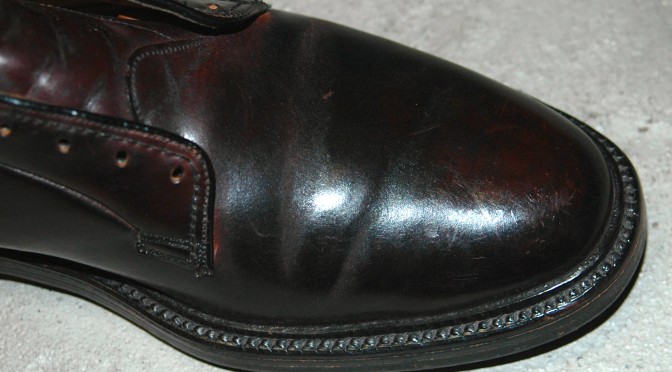
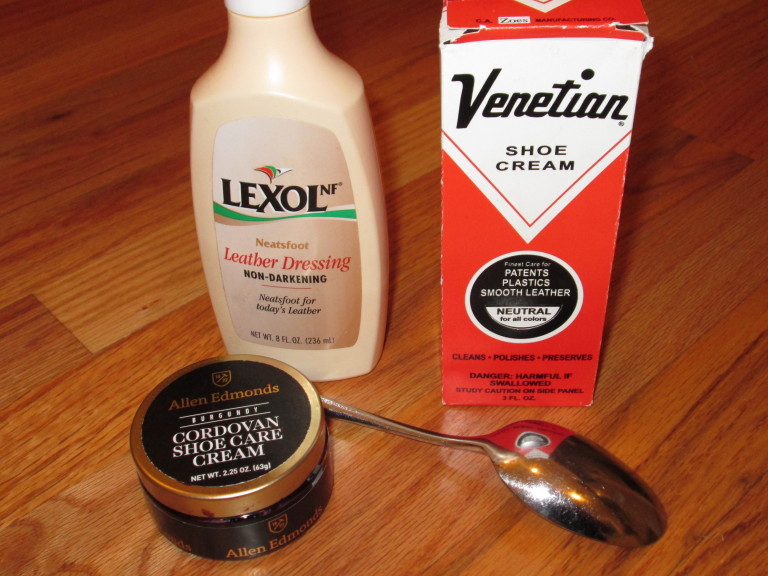
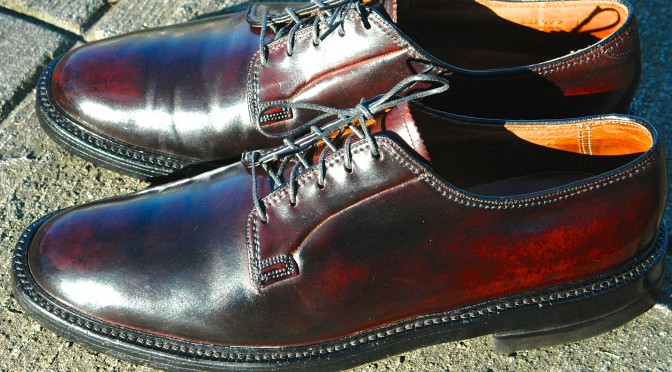
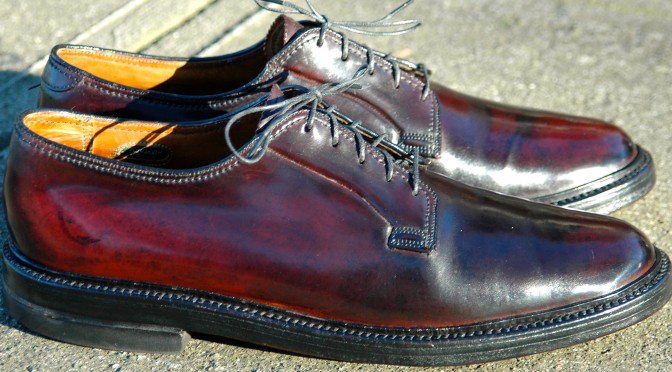
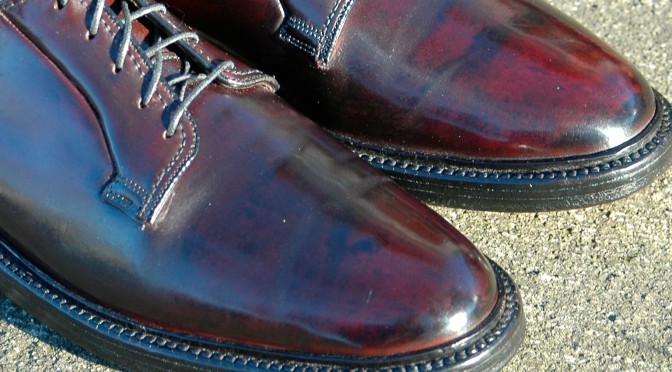
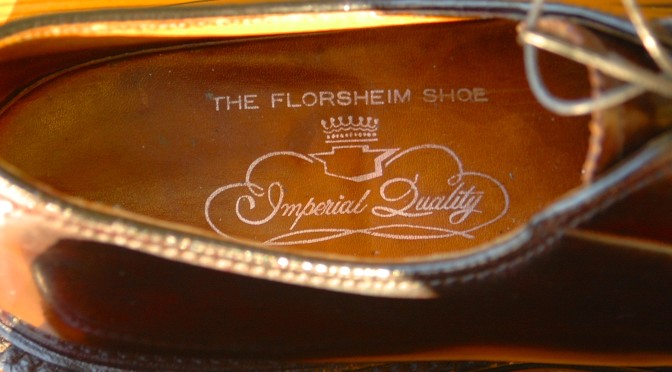
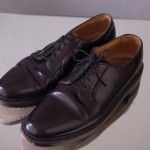
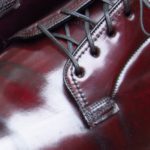
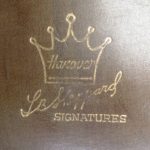
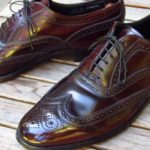
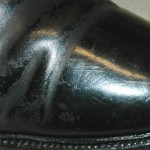

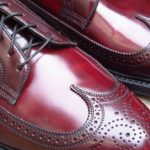
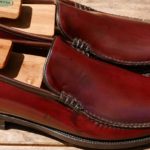
Great step-by-step instructions. Like the spoon idea as I was unsure about getting a deer bone.
Hi David, do you think Saphir Mink Oil is a decent substitute for the Lexol NF? The latter seems impossible to get in the UK and shipping is 3 times the cost of the 8oz!
Thanks 🙂
I haven’t used Saphir mink oil. So I am not sure how well it would work on Shell Cordovan. I would probably just use Renovateur
Ah okay, appreciated. As it happens I already have Renovateur so that’s useful. The Lexol NF, over here, seems to have an association with the equestrian (saddles) which seems apt 🙂
Ah okay,
Thanks – useful as I already have some. Just bought a pair of 93606s, my first, and they look like they need a bit of work. Will see if my Ventura County based friend will send me some Lexol… looks useful stuff to have around.
Chris
Ah okay, appreciated. As it happens I already have Renovateur so that’s useful. The Lexol NF, over here, seems to have an association with the equestrian (saddles) which seems apt 🙂
I’ve just received my first Florsheim, a 93606…. Absolutely loving the build quality and definitely worth the extortionate shipping and import costs I have to incur living in England.
I’ve taken the buying advice to heart and really looked out for cracking and how the back of the shoe looks. The ones I’ve got look structurally perfect and, from what I’ve learned here, I reckon are either 1960 or 1970 shoes. The only defect of note is the purpose of my post here… I notice shoes that have undamaged backs but the binding is perishing (tiny black lining the goes from the whole ankle area). On my shoes this has happened a little – it actually looked a lot worst on the photos but isn’t noticeable while the shoes are being worn… But, perfectionist that I am, do you know of any ways to deal with this?
P.S I definitely second that this website is a gateway drug for antique shoes…. I have another pair of Florsheim black brogues winging their way to me already, from your excellent Watch List. I actually was fairly set on the Florsheims I wanted but realised there was a whole Pandora’s Box on your site of more Florsheim models that I now consider that I need. Thanks for that, I think.
Chris
You can cover the cracking with sole edge dressing but fixing/replacing it is expensive.
Hopefully all this tariff nonsense ends someday soon. Free trade!
Ah okay, I did consider sole edge dressing but thought it might be a little out there – will give that a go. I’ve enjoyed restoring the 93606s and used the spoon treatment with Lexol NF (I had two bottles shipped over from a US horse equipment business, in conversation with the kind owner I thought it best not to mention their intended use was for shoes made out of horse).
Yep, the tariffs aren’t fun. Before I became obsessed with Florsheim, and vintage in general, I considered coming over just to buy some Alden shells.
Anyway, the Mrs is fortunately intrigued by the vintage nature and my restorations. Either that or I’m being humoured.